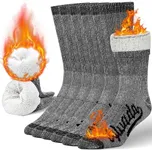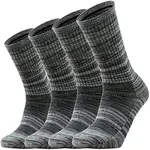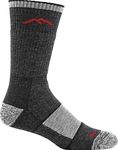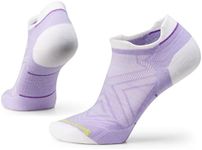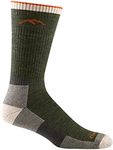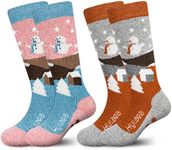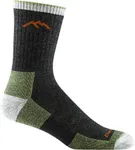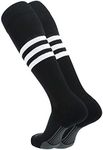Buying Guide for the Best Merino Wool Sock
Merino wool socks are a popular choice for their comfort, warmth, and moisture-wicking properties. When selecting the right pair of merino wool socks, it's important to consider various factors that will ensure the socks meet your specific needs. Here are some key specifications to help you make an informed decision.Material CompositionMaterial composition refers to the blend of fibers used in the sock. Merino wool socks often contain a mix of merino wool and synthetic fibers like nylon or elastane. The merino wool provides warmth, softness, and moisture-wicking properties, while the synthetic fibers add durability and elasticity. For maximum comfort and performance, look for socks with a higher percentage of merino wool (at least 50-70%). If you need socks for high-intensity activities, a blend with more synthetic fibers might be more durable.
CushioningCushioning refers to the amount of padding in the sock, which can affect comfort and support. Light cushioning is suitable for everyday wear and warmer weather, as it provides minimal bulk. Medium cushioning offers a balance of comfort and support, making it ideal for hiking and other outdoor activities. Heavy cushioning provides maximum comfort and warmth, perfect for cold weather and long hikes. Choose the level of cushioning based on your activity level and the conditions you'll be wearing the socks in.
Fit and SizeFit and size are crucial for comfort and performance. Merino wool socks should fit snugly without being too tight, as this ensures they stay in place and prevent blisters. Socks that are too loose can bunch up and cause discomfort. Most brands offer size charts to help you find the right fit based on your shoe size. Consider trying on different sizes if possible to find the best fit for your feet.
ThicknessThickness refers to the overall bulk of the sock. Thin socks are lightweight and breathable, making them suitable for warm weather and low-intensity activities. Medium-thickness socks offer a balance of warmth and breathability, ideal for moderate weather and activities. Thick socks provide maximum warmth and cushioning, perfect for cold weather and high-intensity activities. Choose the thickness based on the climate and the type of activity you'll be engaging in.
Moisture-Wicking PropertiesMoisture-wicking properties refer to the sock's ability to draw moisture away from the skin, keeping your feet dry and comfortable. Merino wool naturally wicks moisture, but the effectiveness can vary based on the blend and construction of the sock. Look for socks specifically designed for moisture management if you plan to engage in activities that cause your feet to sweat. This feature is particularly important for preventing blisters and maintaining foot health.
DurabilityDurability refers to how well the socks hold up over time and with repeated use. Merino wool socks with reinforced heels and toes tend to be more durable, as these areas are prone to wear and tear. The inclusion of synthetic fibers like nylon can also enhance durability. If you need socks for frequent use or intense activities, prioritize durability to ensure they last longer and provide consistent performance.
Temperature RegulationTemperature regulation refers to the sock's ability to keep your feet warm in cold conditions and cool in warm conditions. Merino wool is known for its excellent temperature-regulating properties, making it suitable for a wide range of temperatures. If you need socks for varying weather conditions, look for those that emphasize temperature regulation. This feature is particularly important for outdoor enthusiasts who experience different climates.

